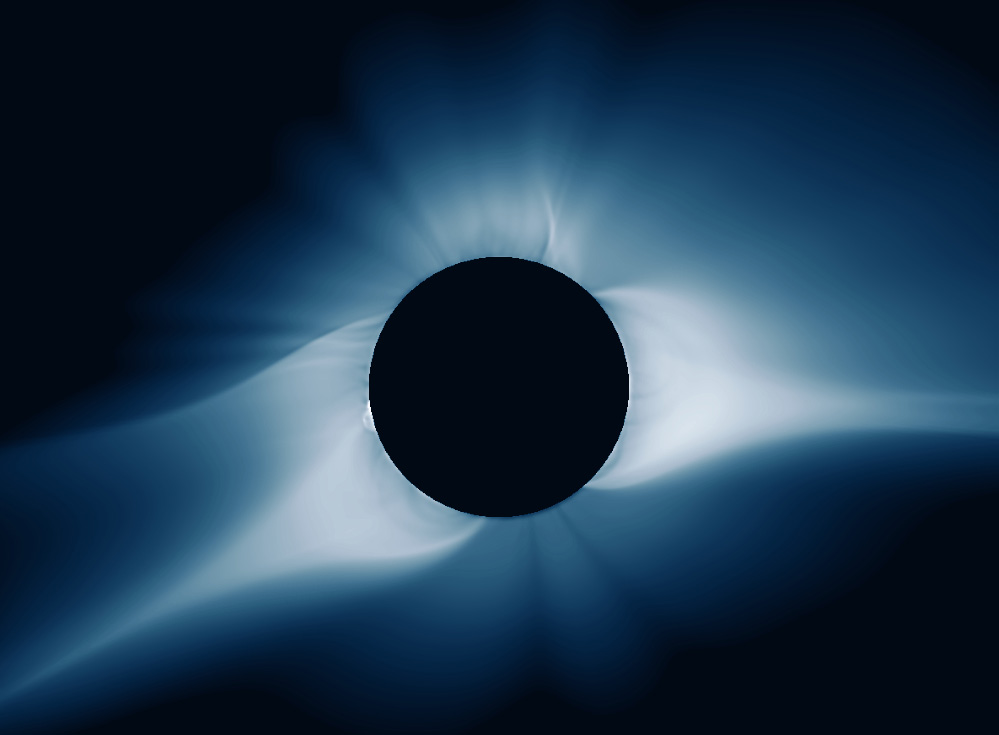
How does this work?The Sun is made of plasma, a gas-like state of matter in which electrons are stripped from their nuclei. Both the electrons and the stripped atoms now carry an electrical charge. The result is a super-hot mix of charged particles, and when charged particles move, they create magnetic fields. When these magnetic fields rise from the solar interior, they emerge through the Sun's surface and reach high into the corona.
Magnetic fields, of course, are invisible. But plasma can be trapped in them, and
hence show us the shape, just as we use iron filings to trace the field of a
bar magnet. The Sun's magnetic
fields are responsible for solar activity.
Sunspots result from magnetic fields emerging through the solar
surface. And, it is the breaking
and reconnecting of these magnetic fields that cause solar flares and the
resulting coronal mass ejections (plasma shot into space)! It is the shape of the Sun's magnetic fields at the time of
the eclipse that determines how the corona will appear. The Solar Cycle Plays a RoleThe shape of the corona is also determined by the solar
cycle. Every 11 years or so, the
Sun moves from a period of high solar activity (Solar Maximum), with lots of
magnetic fields, sunspots, and flares, to a period of low solar activity (Solar
Minimum), with few sunspots and less activity. During solar maximum, the ubiquitous
magnetic fields hold the plasma in tightly, so the corona appears more
circular. During solar minimum,
with fewer magnetic fields, the plasma is freer to move out, especially in the
equatorial regions, and the corona appears more elliptical. We are currently approaching solar
minimum, so we expect to see more of an elliptical coronal pattern in our total
eclipse. The Predicted Shape
By observing the Sun's magnetic fields[1]
solar scientists at Predictive Science, Inc. were able to predict the shape of
the corona on July 25, one complete solar rotation (about 27 Earth days)
before August 21 –when the same
side of the Sun will be facing us as on July 25. The fields may change a little, but the
basic structure should remain fairly constant. Streams of light protruding from the Sun's north and south
pole will be visible, as well as concentrated bubbles of light close to the
surface. 

Additional Resources:
Image credits:
| ||||||||




